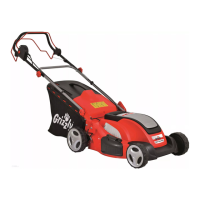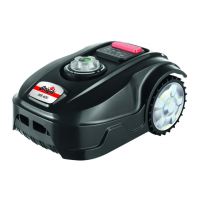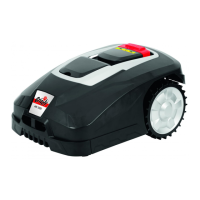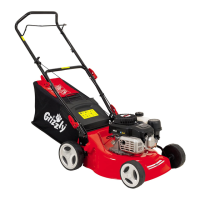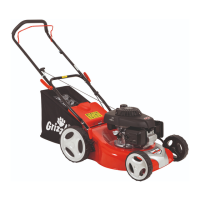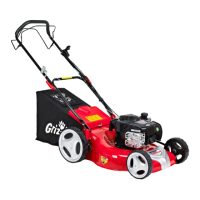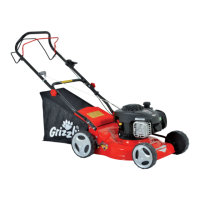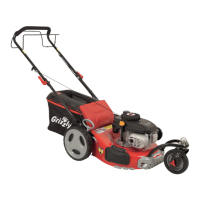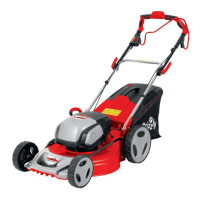GB
26
Hold the cutting height adjuster
(11) and move it to the correct
cutting height, as appropriate.
There are 6 dierent cutting heights:
20-70 mm
The correct height is around 30 – 45 mm
for a decorative lawn and around
30 –65 mm for a used lawn.
A higher cut height should be se-
lected for the rst cut of the season.
Switching On and Off
1. Plug the mains lead (18) into
the appliance’s power inlet (17).
2. Turn the end of the mains lead
into a loop and hook it into the
cable strain relief (14).
3. Connect the equipment to the
power supply.
4. Before switching on, ensure that
the equipment is not in contact
with any objects.
5. To switch on, press
2
1
the release button
(16) on the handle
at the same time
as pressing the start lever (2).
Release the release button (16).
6. To switch o, release the start
lever (2).
After switching o the equip-
ment, the blade continues to
turn for several seconds. Do not
touch the moving blade. There
is a risk of injury.
Level gauge
The level gauge is located on the side of
the grass catcher. The aerodynamic air
guidance provided by the ap also opti-
mises the lling.
Flap open:
grass catcher empty
Flap closed:
grass catcher full
Working with the Lawnmower
Regular mowing encourages increased fo-
liation of the grass and kills o weeds at the
same time. Therefore, not only does each
mowing increase the density of the lawn, it
also produces an evenly resilient lawn.
The rst cut is to be made in around April,
at a growth height of 70 – 80 mm. In the
main vegetation period, the lawn is to be
mowed at least once a week.
• The two handles (see 12) make it
easier to carry the appliance.
• Start mowing near the socket and
work away from the socket.
• Always keep the extension cable
behind you and when you turn, move
it to the side that has already been
mowed.
• Run the equipment at a walking pace,
in tracks that are as even as possi-
ble. For gap-free mowing, the tracks
should always overlap by a few centi-
metres.
• Adjust the cut height so the equipment
is not overloaded. Otherwise, the mo-
tor may be damaged.
• On slopes, always work across the
slope. Take particular care when go-
ing backwards and pulling the equip-
ment.
